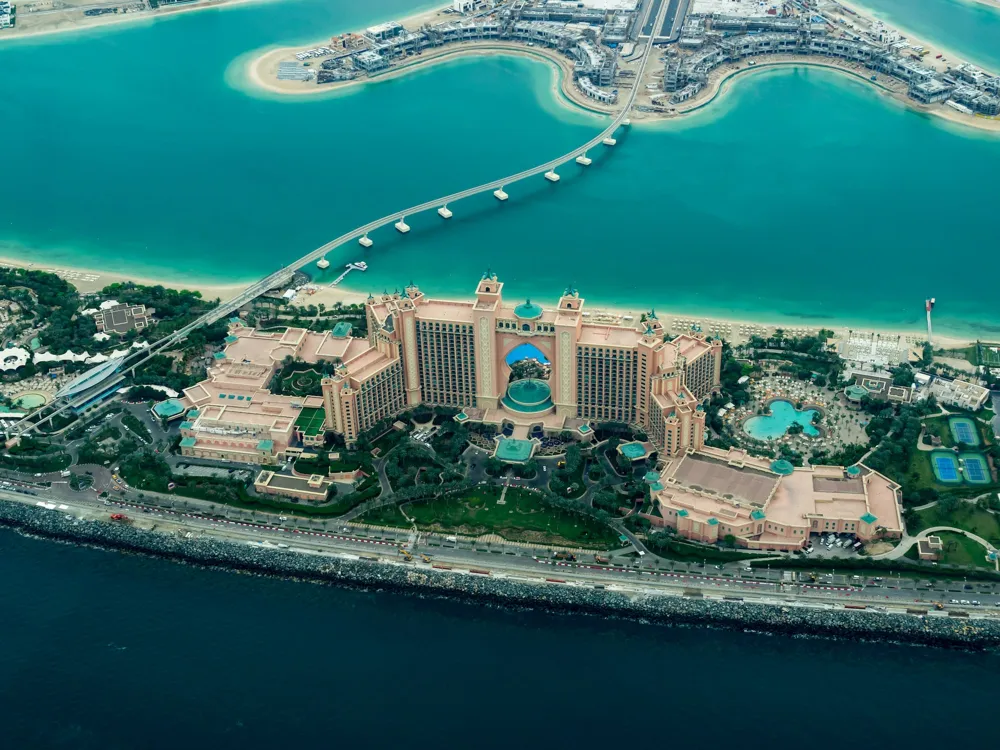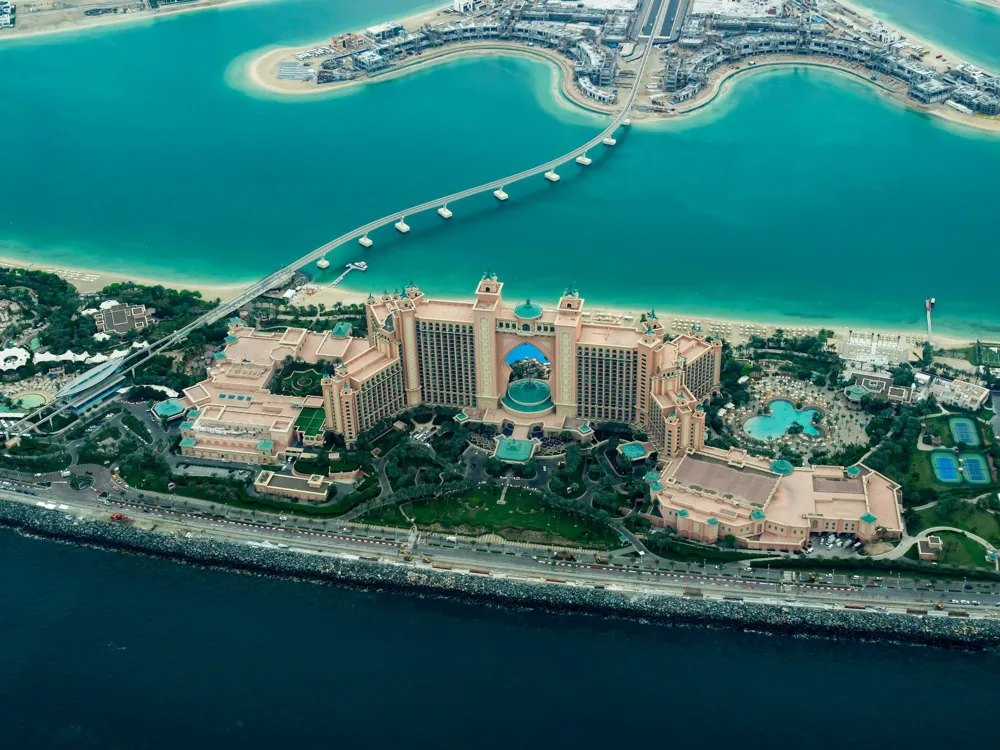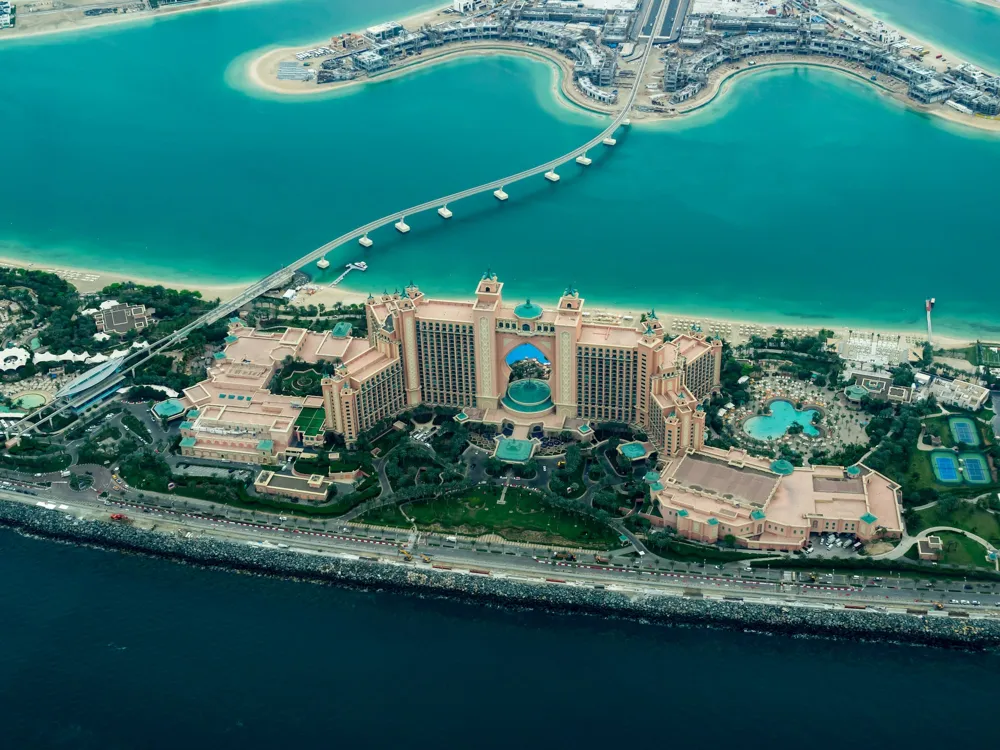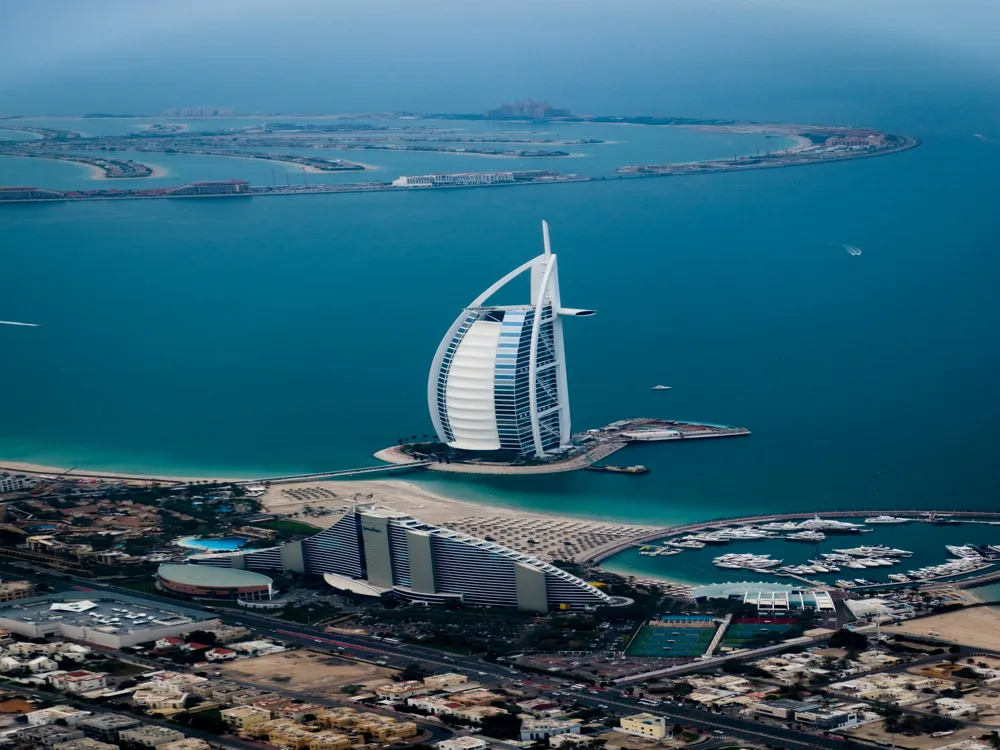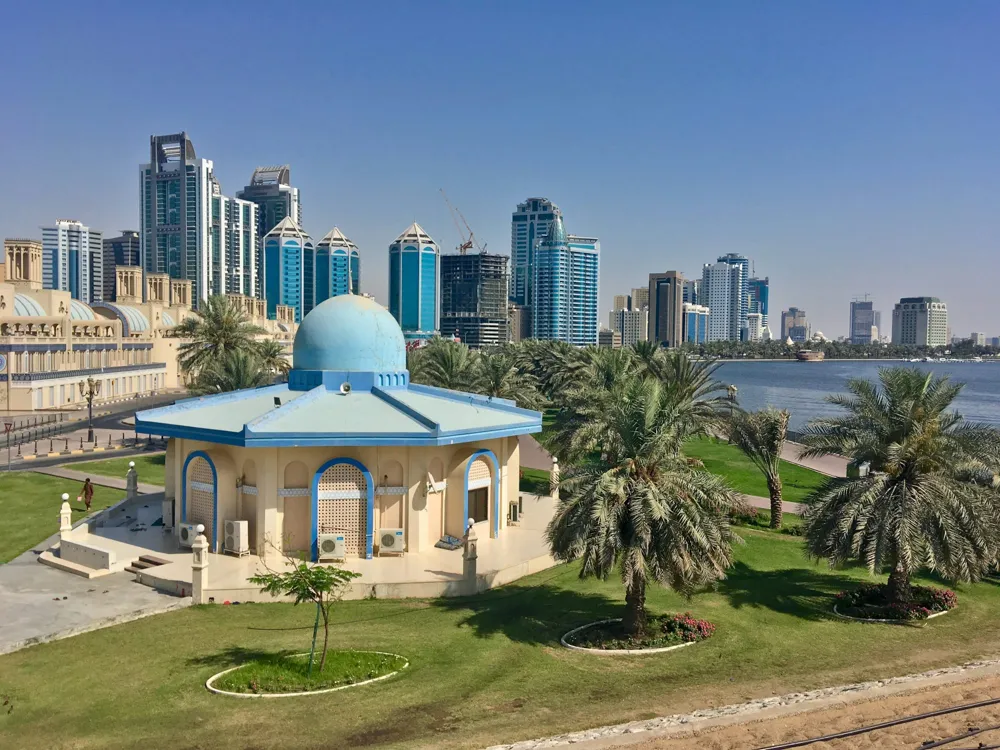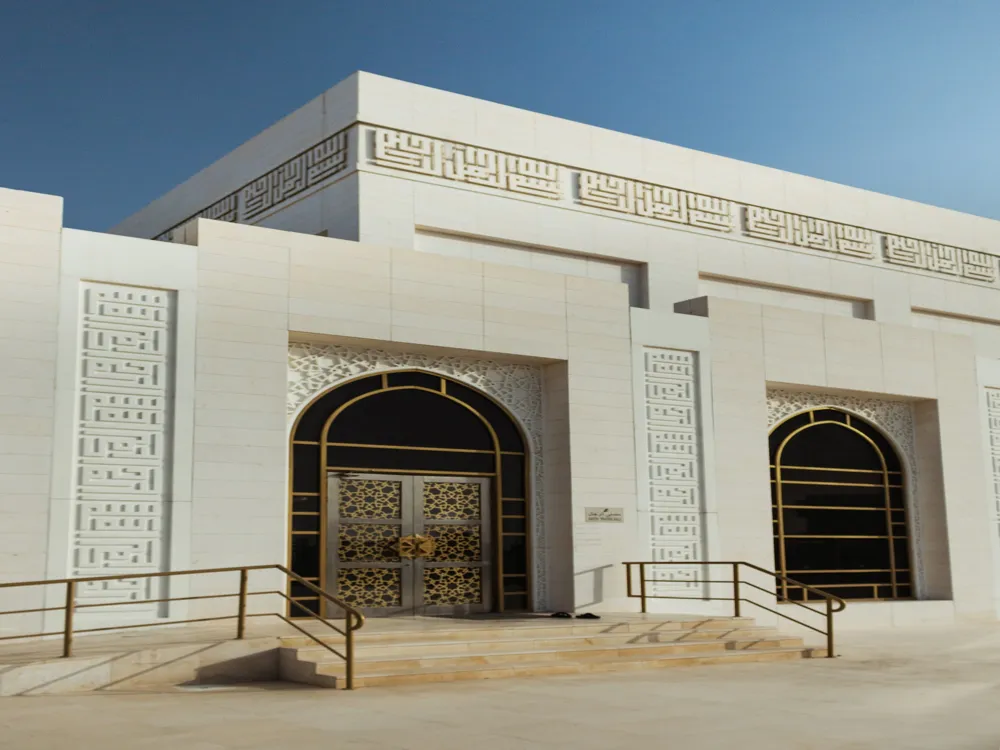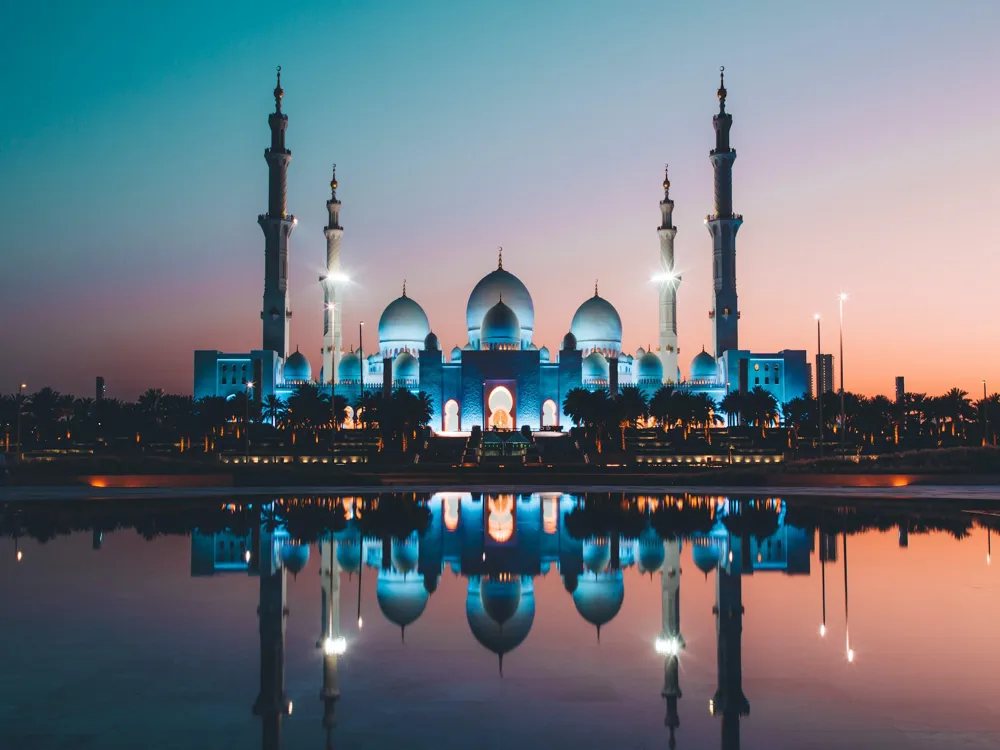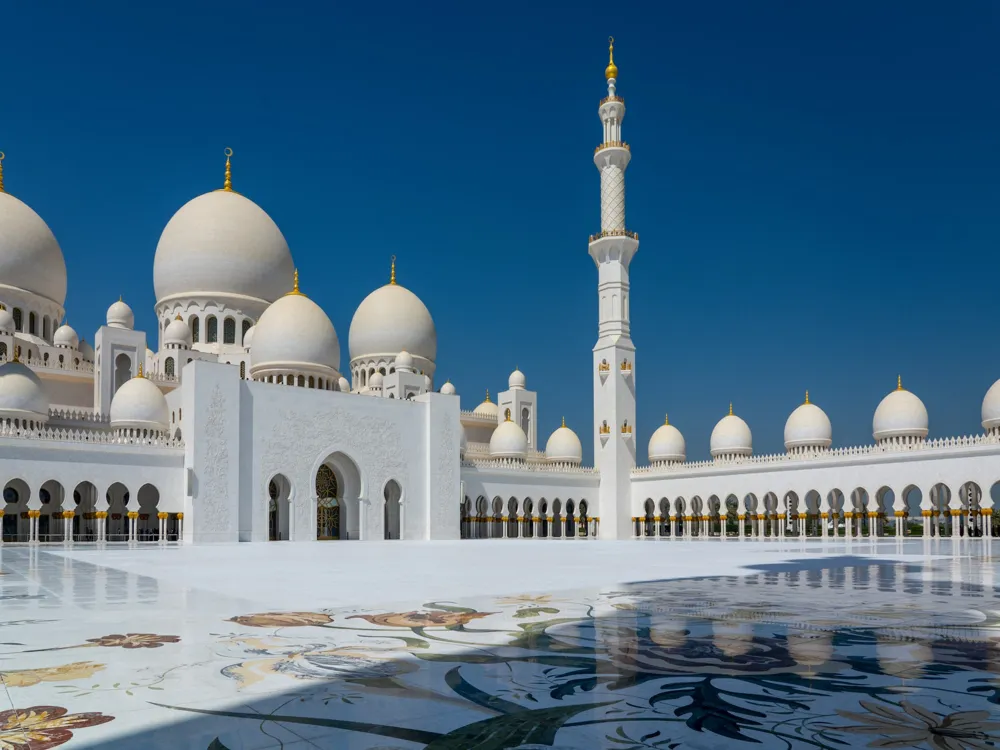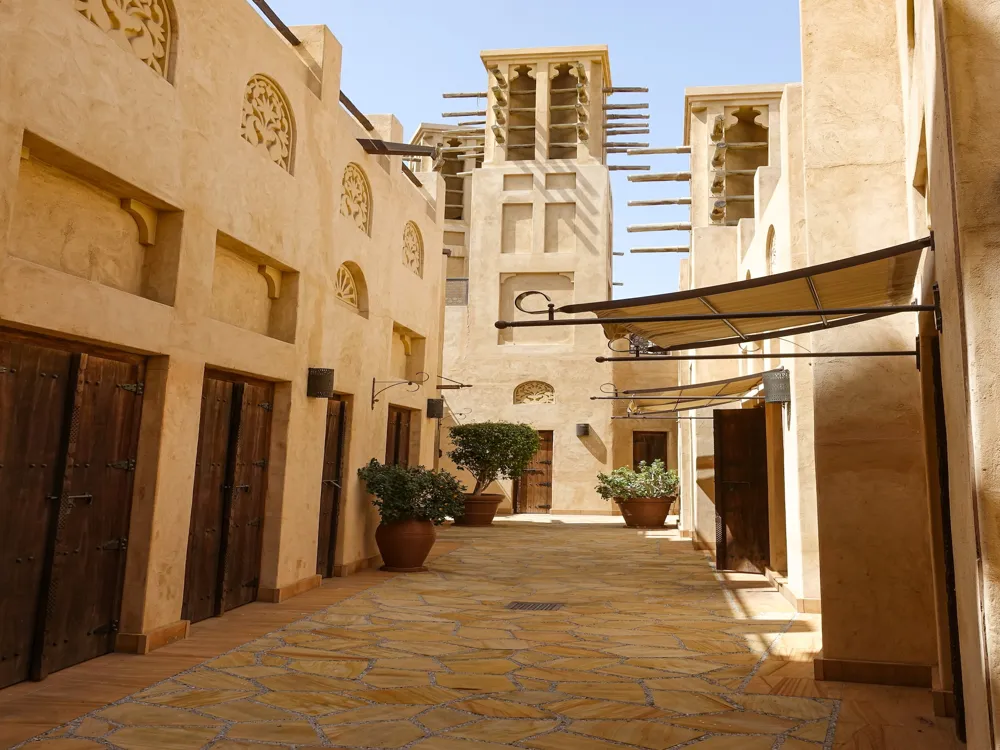The Jumeirah Mosque in Dubai is a stunning exemplar of Islamic architecture and a symbol of Dubai's rich cultural heritage. Located in the prestigious Jumeirah district, this mosque stands as a beacon of Islamic tradition and architectural grandeur. Not only is it a place of worship, but it also serves as a cultural understanding bridge, inviting people from all backgrounds to admire its beauty and learn about Islam. The Jumeirah Mosque, which can accommodate up to 1,200 worshippers, was built in the medieval Fatimid tradition, employing modern building materials yet staying true to the ancient Islamic architectural style. The mosque's design highlights intricate Arabic calligraphy and geometric patterns, showcasing the artistry and craftsmanship of its creators.
One of the most striking features of the Jumeirah Mosque is its extensive use of natural stone, contributing to its majestic and timeless appearance. The mosque's large central dome, flanked by twin minarets, dominates the skyline, presenting an image of balance and harmony. At night, the mosque is a sight to behold, as it is bathed in a golden hue from the carefully placed lighting, emphasizing its architectural details. The Jumeirah Mosque is more than just a religious site; it's a masterpiece of Islamic art and a testament to Dubai's commitment to cultural diversity and religious tolerance.
The architecture of Jumeirah Mosque is a splendid representation of Islamic design merged with modern aesthetics. The mosque's structure is heavily influenced by traditional Islamic architecture, particularly the Fatimid style, which is characterized by its use of arches, domes, and minarets. The Jumeirah Mosque is distinguished by its intricate artwork, which includes detailed arabesque patterns and calligraphy, signifying the artistic tradition of Islamic culture.
The mosque's interior is as stunning as its exterior, with elaborate carvings, stained glass windows, and vibrant ceramic tiles. These elements not only enhance the mosque's beauty but also play a functional role in the acoustics and lighting of the prayer hall. The mosque's main prayer hall is adorned with a magnificent central chandelier, which complements the natural light entering through the windows, creating a serene and spiritual ambiance. The careful attention to detail in the mosque's design reflects the Islamic principle of unity, where every element is harmoniously interconnected.
Visitors should dress modestly, covering shoulders and knees. Traditional attire, such as abayas for women and kanduras for men, can be borrowed at the mosque.
The mosque offers guided tours for visitors, providing insightful information about the mosque's architecture and Islamic practices. It's recommended to join these tours for a complete experience.
Photography is allowed, but visitors should be respectful and avoid photographing people without their permission. Focus on capturing the mosque's architecture and design.
Be mindful of prayer times when planning your visit. Non-Muslims are not permitted inside the mosque during prayers, so it's best to visit between prayer times.
As a place of worship and cultural significance, visitors should speak softly and act respectfully throughout their visit to the mosque.
Jumeirah Mosque is easily accessible from various parts of Dubai. Visitors can reach the mosque by taxi, which is a convenient option from anywhere in the city. Alternatively, public transport such as buses and the Dubai Metro offers affordable ways to reach the mosque. The closest metro station is the World Trade Centre Station, from where one can take a short taxi ride or bus to the mosque. For those driving, there is ample parking available near the mosque. It's advisable to check the local traffic and public transport schedules ahead of your visit for a smooth journey.
Overview of Jumeirah Mosque in Dubai
Architecture of Jumeirah Mosque
Tips When Visiting Jumeirah Mosque
Dress Appropriately
Guided Tours
Photography Etiquette
Respect Prayer Times
Cultural Sensitivity
How To Reach Jumeirah Mosque
Jumeirah Mosque
Jumeirah
Dubai
₹ 17,999 onwards
View dubai Packages
Weather :
Tags : Mosque
Timings : 10:00 AM - 8:00 PM (Saturday to Thursday); Closed Fridays
Time Required : 2-3 hours
Entry Fee : Free. Tours Start at AED 25
Planning a Trip? Ask Your Question
Dubai Travel Packages
View All Packages For Dubai
Top Hotel Collections for Dubai

Private Pool

Luxury Hotels

5-Star Hotels

Pet Friendly
Top Hotels Near Dubai
Other Top Ranking Places In Dubai
View All Places To Visit In dubai
View dubai Packages
Weather :
Tags : Mosque
Timings : 10:00 AM - 8:00 PM (Saturday to Thursday); Closed Fridays
Time Required : 2-3 hours
Entry Fee : Free. Tours Start at AED 25
Planning a Trip? Ask Your Question
Dubai Travel Packages
View All Packages For Dubai
Top Hotel Collections for Dubai

Private Pool

Luxury Hotels

5-Star Hotels

Pet Friendly





